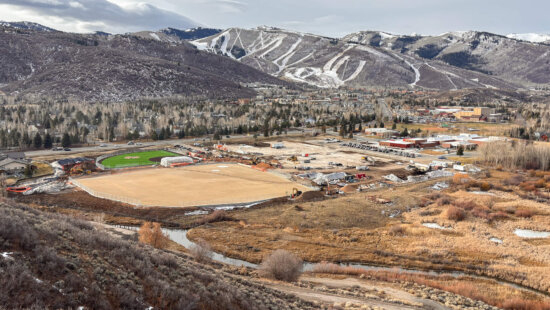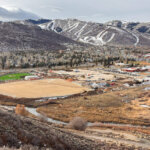News
Despite opposition, Avalanche fences at the Canyons are being installed
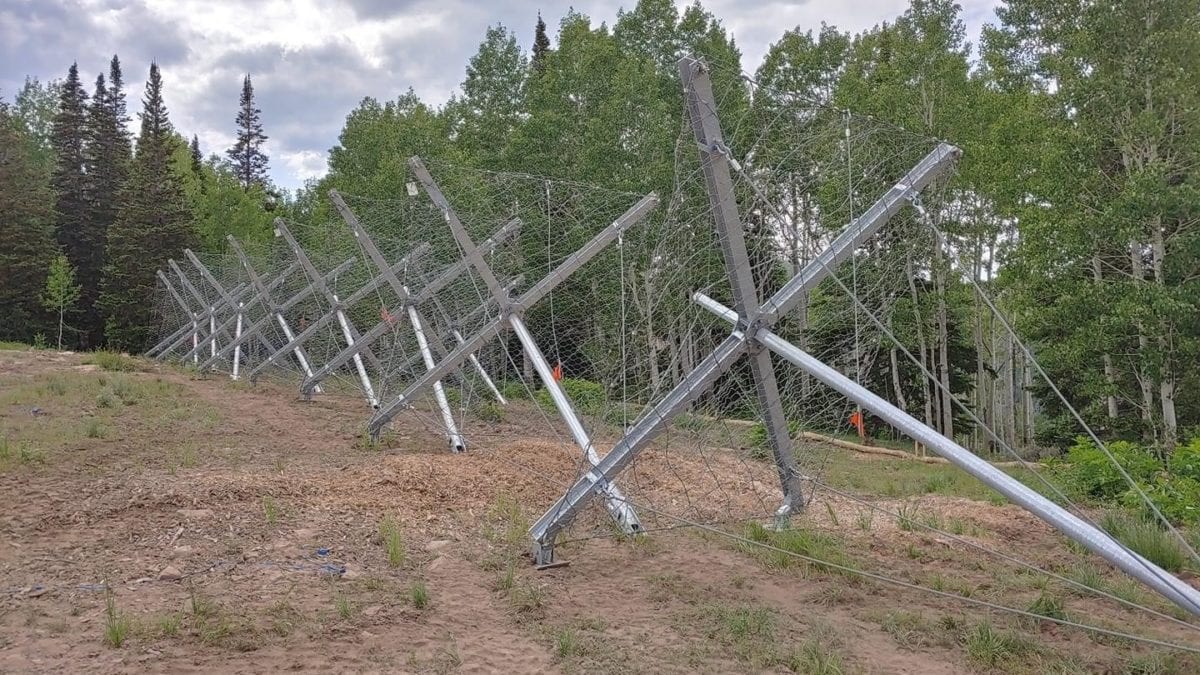
The avalanche fences under construction. Photo: TownLift
PARK CITY, Utah. — Park City residents and visitors value easy access to wilderness and pristine mountain views. These core community values are raising opposition to Iron Mountain Associates‘ plans to install 214 avalanche fences. The avalanche fences are three to four meters tall and under construction in the Dream Peak area of The Colony neighborhood.
The avalanche barriers aim to mitigate the possibility of an avalanche hitting the driveway of two specific homes in The Colony. The construction of the fences will inhibit access to the backcountry ski runs The Finn, Nutty Putty, La Frontera, Main Mac and Mini Mac.
A consistent out-pour of community comment has ensued since the county approved the project in 2020. Despite the community opposition, the construction of the fences is now underway.
The voice of the opposition illuminates pertinent truths, despite the ongoing construction.
While avalanche fences are an effective means for mitigation, snow safety professionals share the opinion that there are better options. Alternative solutions do not cause as much harm to wildlife and do not create extreme visual degradation.
Jake Hutchinson formerly managed the ski patrol avalanche mitigation program at The Canyons Resort (now Canyons Village at Park City) for over ten years. Hutchinson created the avalanche atlas currently used as a model for Canyons Village at Park City and The Colony.
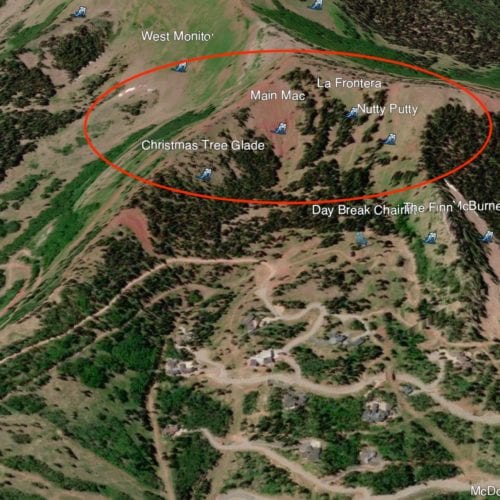
Hutchinson explains, “The avalanche modeling is based on insufficient data…. Most of what they have came from me and a couple of years of doing some measurements…. If you look at the Swiss and Canadian models, they have designed everything for an absolute extreme event that is probably never going to happen.”
The Colony has long been concerned about avalanche mitigation.
Hutchinson describes, “They used to say that they were concerned that if the ski resort went out of business, they would be stuck with this avalanche problem and no one to deal with it… I knew that these two homes were on their radar… How they were going to mitigate the slide paths has always been a question… Originally they proposed Gazex exploders up there, which are still a big nuisance and eyesore, but far less of an impact than permanent fences.”
Individuals privy to the impending fence construction looked to the public comment period as an opportunity to express concerns and share opposition. The project’s approval under the Specially Planned Area (SPA) agreement surprised some residents.
Hutchinson says, “We were watching for public comment period… and they slipped it through under the SPA agreement… The SPA doesn’t specifically have anything about avalanche fences or mitigation.”
The SPA agreement does contain lengthy regulations for preserving sensitive lands and open spaces, wilderness protection, ordinances to minimize the visual impact of developments, and recreational access regulations.
Summit County resident and opponent to the avalanche fences, Seth Dromgoole, sent an email to the County Council to outline several conflicts found in the SPA agreement. Dromgoole states, “My interpretation of the Amended SPA (dated 1999) reveals multiple areas where this project may conflict with the agreement. Potential conflicts arise in the language surrounding viewshed, open space designation, and wildlife.”
Dromgoole also raised the concern, “The LIP [Low Impact Permit] for this project should not have been approved without public comment…The Dream Peak Avalanche Control Mitigation Fencing certainly creates unsightly conditions.”
Both Hutchinson and Dromgoole assert that there are more appropriate alternatives to avalanche mitigation than the installation of over 200 fences.
“Avalanche fencing is not industry standard for this use. The industry standard for fencing is to protect permanently inhabited structures and major roadways, not driveways. Major roadways such as S.R. 190 (BCC), S.R. 210 (LCC), and U.S. 189 (Provo Canyon) are regularly closed during the winter months due to avalanche hazard and avalanche mitigation procedures. The avalanche danger above these roads is SAFELY mitigated with explosives and temporary closures…Avalanche fencing is excessive for what is essentially a shared driveway for two houses,” Dromgoole says.
Hutchinson is adamant that using Remote Avalanche Control Systems (RACS), Gazex is a familiar RACS brand, is an adequate solution to potential avalanche activity in the area. “We aren’t talking about millions of people or millions of dollars of commerce on a highway; we are talking about a driveway that serves two private homes… That is where this whole thing goes against industry standards… They can put RACS up there… and The Colony has all the infrastructure for snow removal,” he says, “If they shoot it [the RACS] at 3 am, the road is cleared and opened, and no one ever knows.” Hutchinson believes that avalanche fences were proposed as an ultimate convenience for high-dollar property owners. “The reason for the fences is that they didn’t want a single moment of inconvenience for the homeowners,” he explains.
The main voice of concern is assuming that residents and visitors will suffer from visual impairment, restricted access to wilderness (backcountry skiing), and loss of wildlife through animal deaths.
Dyer Corp owner Russ Dyer has said that studies have shown that installing the barriers with 3 feet of space between each one allows for wildlife to pass through them and coexist safely.
Dromgoole states, “The avalanche fencing will create a permanent scar on the landscape, will result in the destruction of viewshed for thousands of Summit County residents, and will negatively impact wildlife for the foreseeable future.”
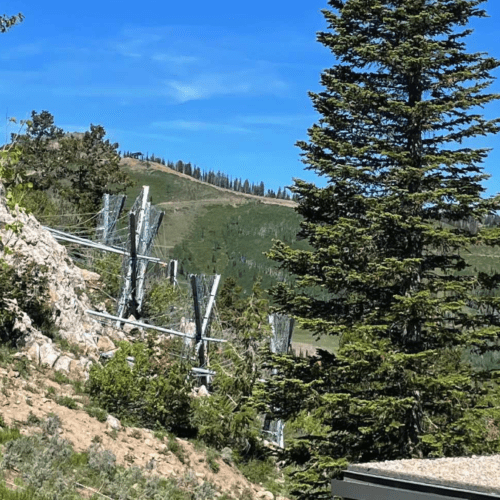
Hutchinson elaborates on the adverse effects of avalanche fences in wildlife populations. “They put fences near the Tombstone lifts in the early 2000s….. The first couple of years after they put those fences in… we were up there pulling dead animals out of those fences in the summertime, fairly consistently… big bull elk, deer, and other animals…. These [fences] will have a similar impact on wildlife, especially because these are about ten times the extent of what is near Tombstone right now,” he explains.
The 200 plus fences will be visible across long distances. “If you are out riding your bike in Round Valley and look up there, it will look like rows and rows of fences,” says Hutchinson. He warns the community. “This is one of those things that people are going to look up there one day and wonder, ‘oh, how did that happen?’… Once they put the fences in, they will permanently impact the landscape.”
Iron Mountain Associates did not respond to an inquiry. Dyer Corp responded with “no comment,” after recent inquiries.
A petition to halt the construction of the avalanche fences continues to be underway. However, it appears to be to irrelevant now, since the construction of the avalanche barriers are underway.

















